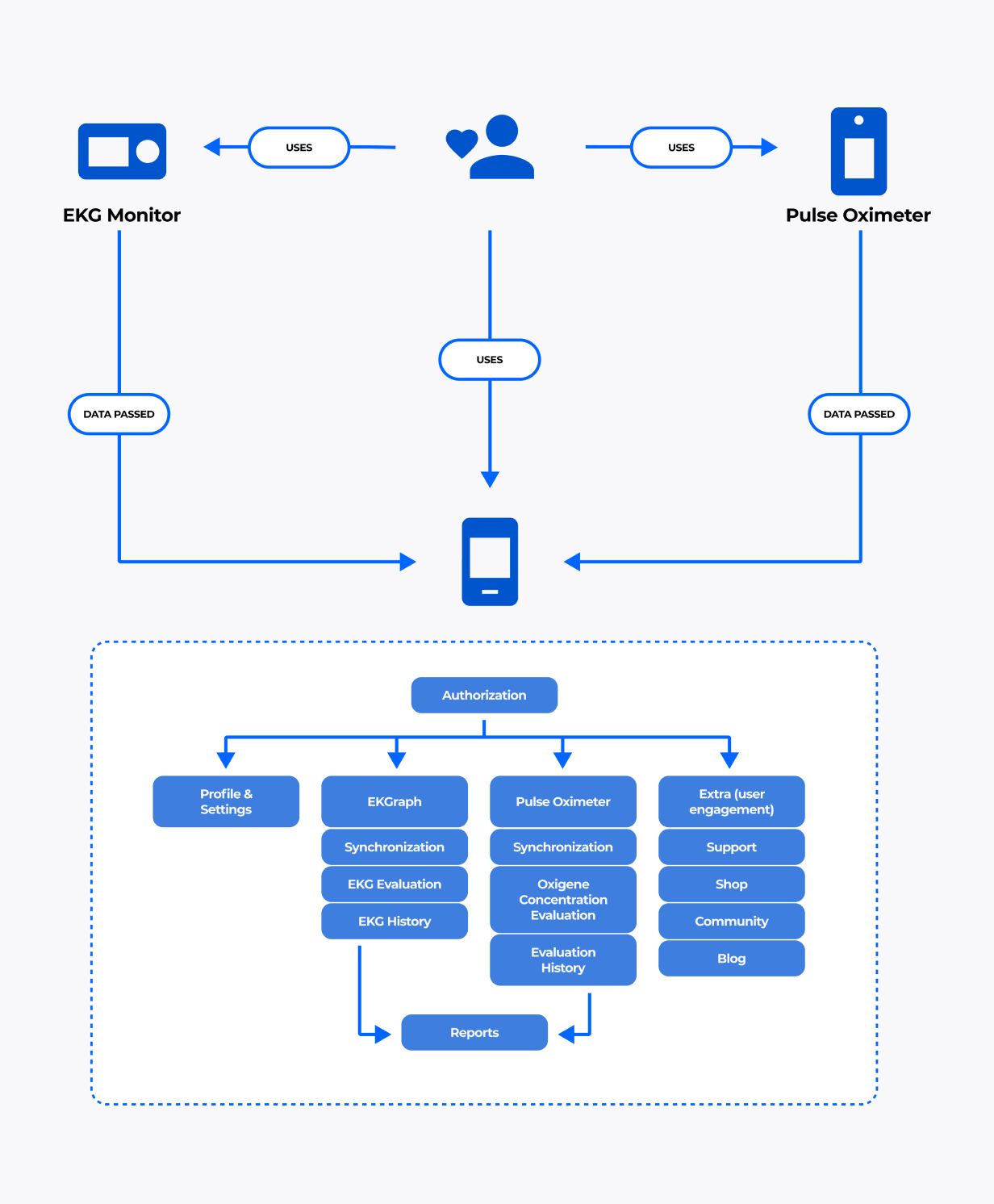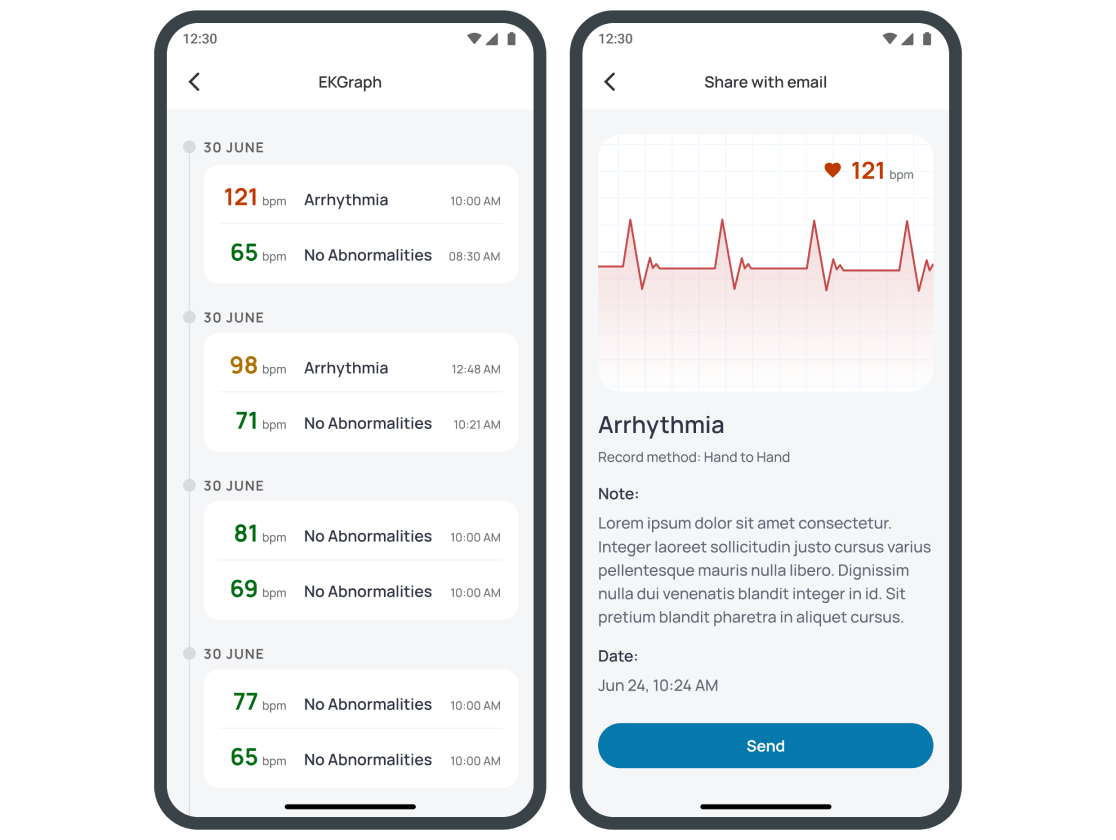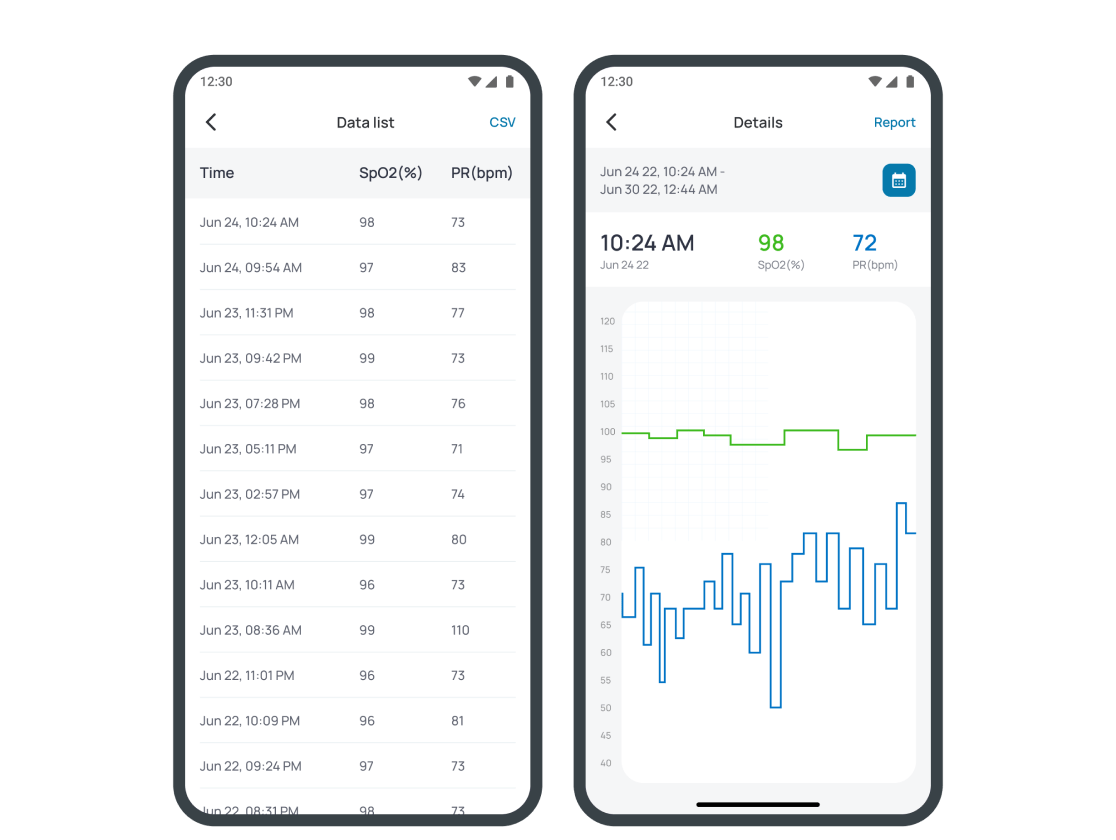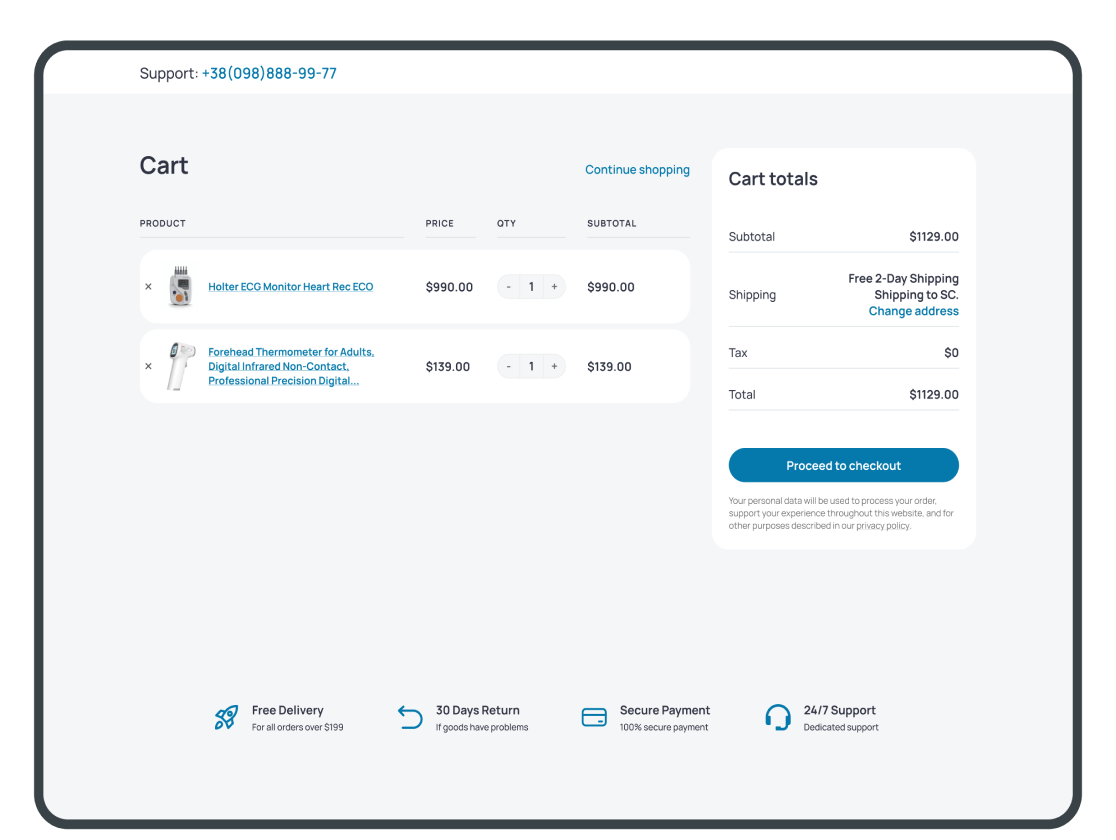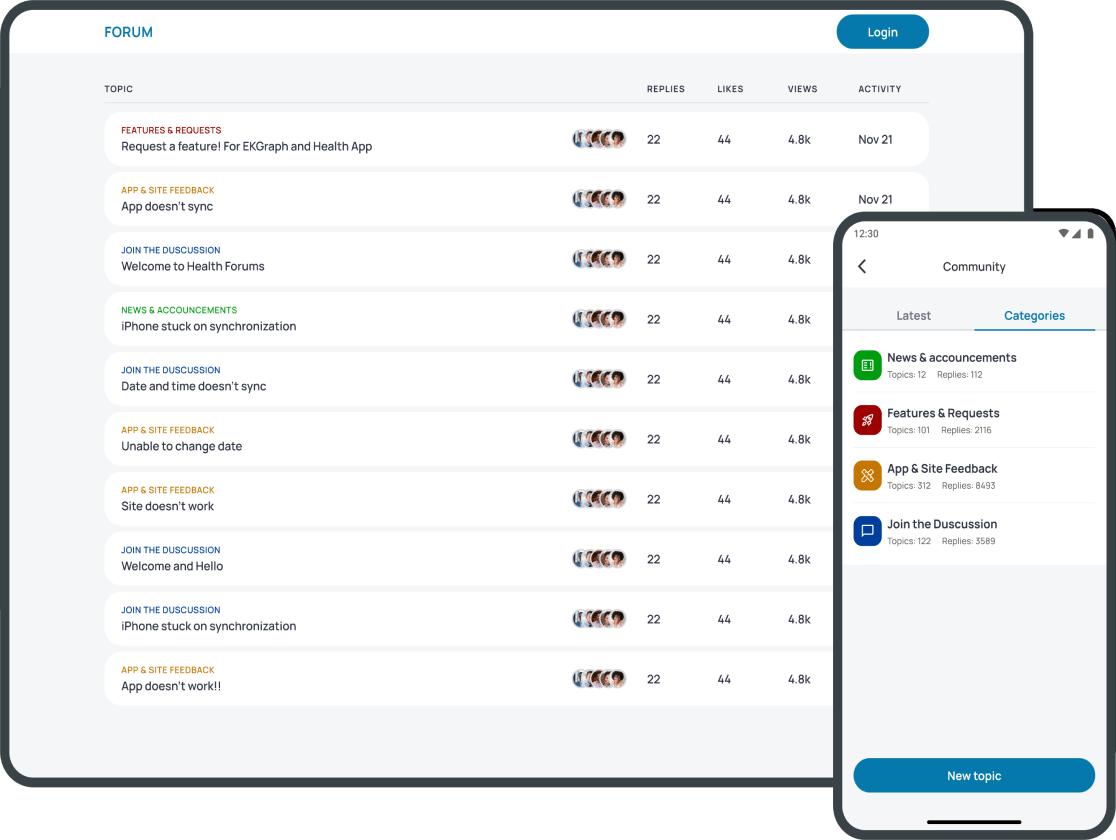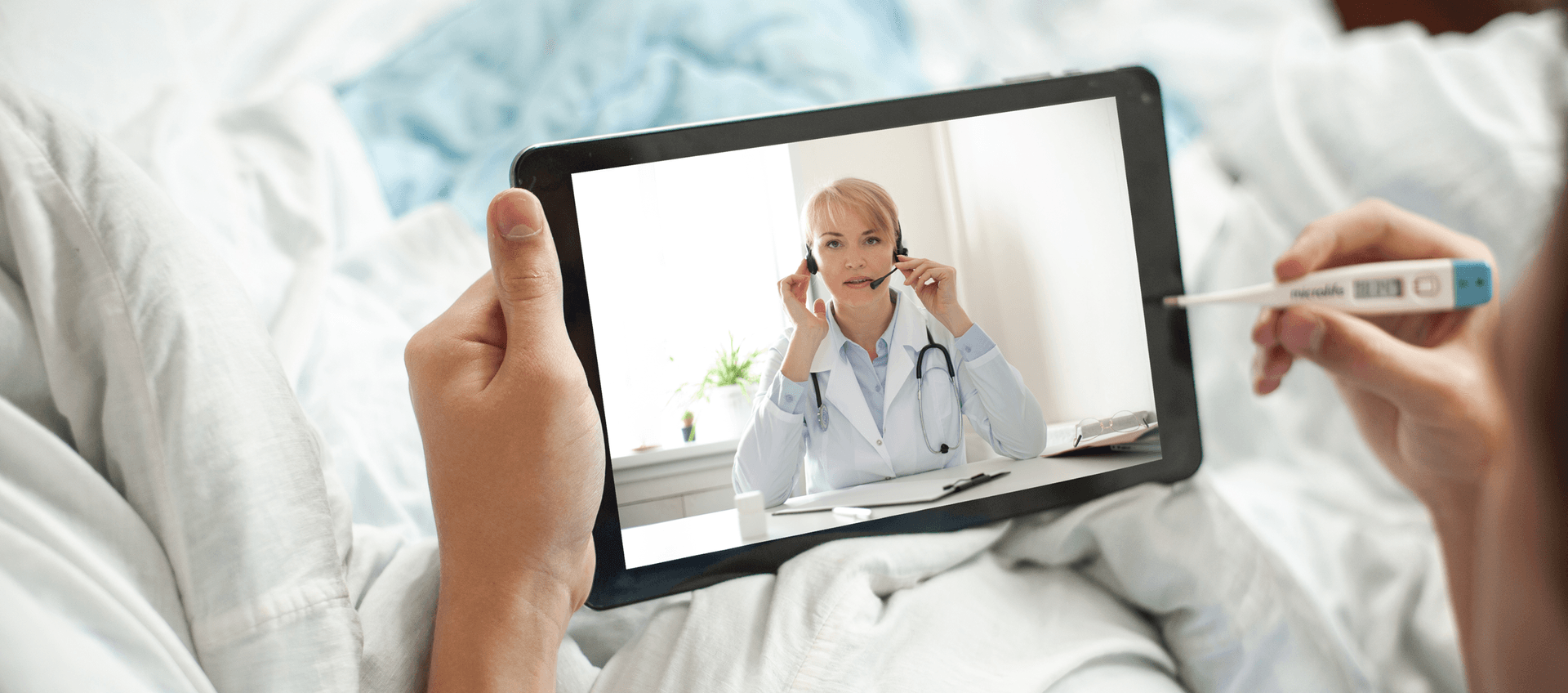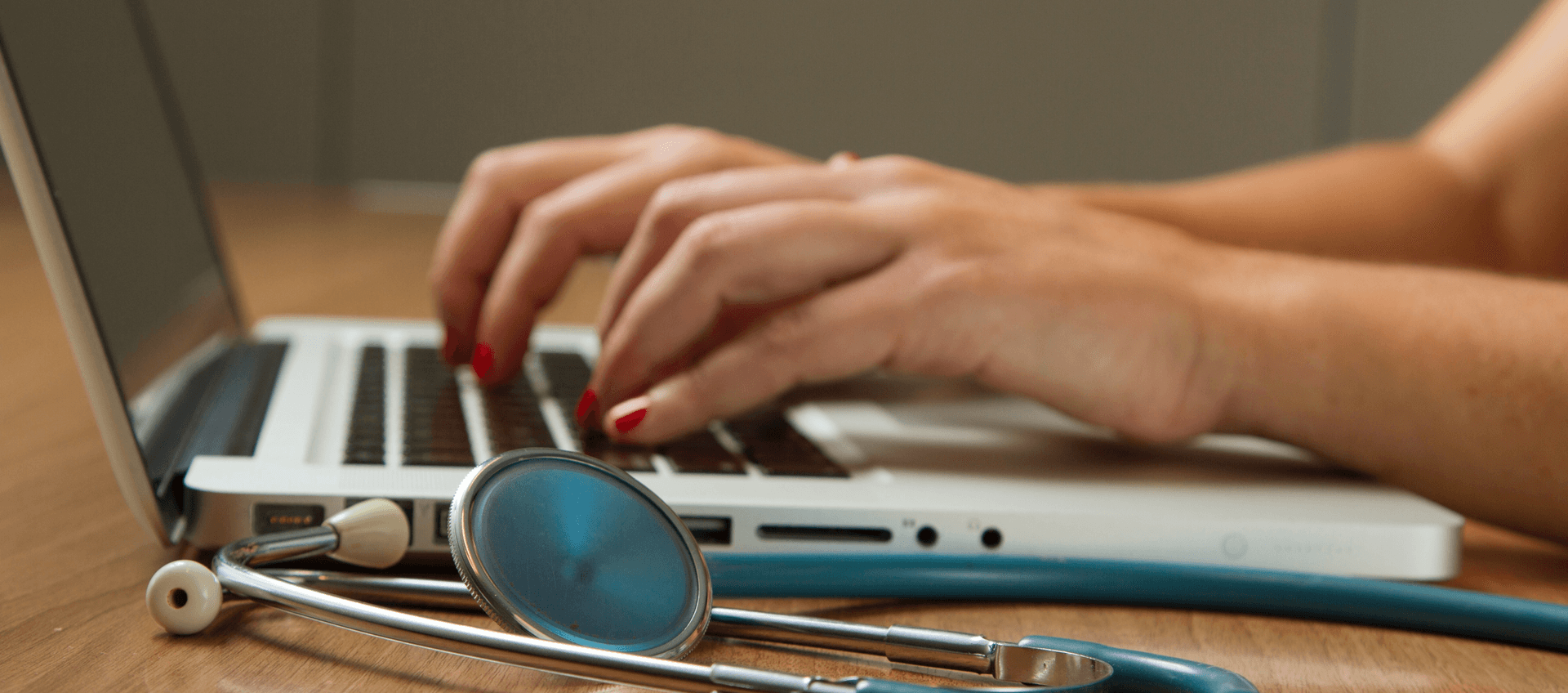IoT-based System for Monitoring EKG and Blood Oxygen Level
A mobile application integrated with IoT devices for EKG monitoring and checking the oxygen concentration in human blood
Industry
Healthcare
Team
18 members
Started in
2020
Country
USA
About a Project
Our customer is a US-based manufacturer that provides medical practitioners with IoT devices for ECG heart monitoring and pulse oximeters to check blood oxygen levels. The company wanted to create software that allows users to check these indicators on phones and a solution to sell devices online, so the customer needed a tech partner to develop them.
Goals set to Cleveroad
Develop software allowing end users to evaluate ECG and check oxygen concentration in their blood from mobile devices.
Ensure that the software meets the 510(k) FDA Medical Device Registration requirements and is HIPAA compliant to store PHI data.
Create the functionality for the customer's website to enable selling the solution online and establish a social professional community.
Solutions we've delivered
Designing and creating mobile apps for iOS and Android: establishing its connection (via Bluetooth) with the company's pulse oximeters and IoT devices for EKG monitoring.
In-depth business and technical solution analysis for US healthcare compliance. Implementation of AES-256 encryption and safe Personal Health Information storing tools.
Creation of the e-commerce module on the company's website. Establishing a social media platform: WordPress-based forum integrated with mobile apps.
Results for the Customer
EKG devices and pulse oximeters produced by the customer are successfully connected to the delivered mobile apps. A reliable, easy-to-use, and portable solution receives good feedback from doctors and patients.
The customer can freely and legally offer a "home EKG" software to US end users and medical practitioners; it is also possible to sell the solution to healthcare providers, creating a new B2B business value stream.
The manufacturer received an e-commerce platform where IoT devices are aesthetically presented and easily accessible for ordering. The clients’ trust grows due to the forum attracting medical professionals.
Business Challenges
Our customer is a US company that manufactures and sells medical IoT hardware, particularly ECG heart monitoring devices and pulse oximeters. The manufacturer wanted to expand its range of digital services and online presence while complying with the rules and requirements of national health regulators (namely, FDA and HIPAA). Therefore, the company needed an experienced technical provider who could:
Create a telecare solution for tracking heart rate and blood oxygen levels from a user's smartphone: a mobile application had to connect with IoT devices wirelessly, receiving and processing data and giving users information about these indicators
Ensure that the software solution meets the requirements of the 510(k) FDA Medical Device Registration and is HIPAA compliant to allow the app to store and process Personal Health Information (PHI) data.
Expand the company's website functionality: add an e-commerce module (to get buyers acquainted with the manufacturer's devices and easily order them) and a social platform for healthcare professionals to increase trust in the medical community.
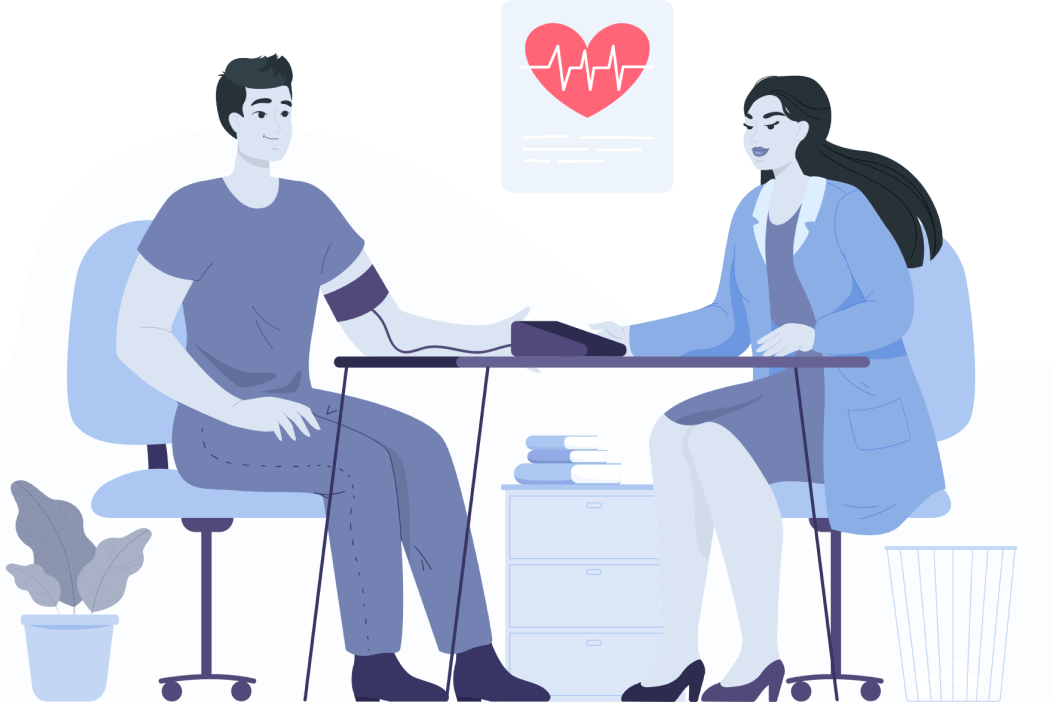
Project in Details
Business Architecture
- The solution’s core is iOS and Android mobile applications connected to IoT devices via Bluetooth. The overall communication process between hardware and app is encrypted (AES-256), so end users can securely track their PHI received from a wireless portable EKG monitor and/or pulse oximeter (consumers can buy and use one or both devices).
- We’ve implemented a database with health data synchronization. Users can keep a history of their self-evaluation and download the PDF reports (ECG results in particular). The information received from IoT devices can be visualized via custom charts in the app. The offline mode allows the app to save data when the Internet connection is lost and process it when the connection is restored.
- We also proposed to the customer the e-commerce and social components for their website and created them after getting an agreement. An e-shop was integrated into the site, as well as the WordPress-based forum connected via RESTful API and a custom HTML parser inside the mobile app. To expand the site functionality more, we offered the customer the idea of the user manual and created its basic version: the company further edited and prepared it for publishing.
Product Essentials
Data synchronization between IoT devices and the mobile applications is performed wirelessly via Bluetooth and configured flexibly. There are two FDA-cleared sensors to get health information: the main one is the EKG monitor, and the second one is the pulse oximeter. Devices' software updates are also provided: the app checks them when connected to hardware and, if available, offers them to users.
Offline mode allows users to keep all needed information even if an Internet connection is absent. The sensors save data in the internal storage and transfer it to the server for further processing immediately after the connection is restored, so the app's functionality can be fully used at any time.
Personal Health Information from the ECG monitor is processed by the app. The system allows users to record their ECG and define fundamental problems, if any. The algorithms enable preliminary diagnosis of arrhythmia, and tachycardia, detect abnormalities, etc. It helps to determine if a health consultation is required and allows sharing of examination results with medical specialists.
The history of all measurements runs depending on the session event-type and related to the activity-type and hydration level retaining and loss. The proper notifications are shown according to data received from the optical sensor. Therefore, the User can follow them to keep healthy habits.
The system is HIPAA and FDA compliant, as it must keep users' general personal information and their PHI secure. As developers, we need to ensure that all activities related to the ePHI information, such as who and when have access to the specific data, are correctly tracked. ePHI/PHI data should be anonymized related to the HIPAA Privacy Rule. AWS-based infrastructure helps a lot to create a monitoring mechanism for the entire system, so we can collect different information for further analysis and react to some specific events. As we are using mobile Medical devices, we also should follow FDA regulations: all the connections should be secured, and each device should have appropriate documentation regarding user data protection and deletion.
Personal Health Information on oxygen saturation is received from the pulse oximeter and read by the system, as well as ECG recordings. With both oximetry and ECG report features, this solution is a beneficial tool for patients’ self-assessment and remote patient monitoring programs. End-users can track changes in their health by themselves, remaining in their comfort zone and quickly discovering if they need to visit a specialist.
The unlimited storage allows users to keep a history of all measurements, and details of every session can be reviewed when required. All oximetry reports can be reviewed in the application, printed, and downloaded as a PDF for further sharing with practitioners.
Direct and secure report sending is also allowed in the application; there's no need to download them. Medical practitioners may use the system to regularly get patients' reports and ensure the treatment goes in the right direction
Webshop and user profile functionality allows our customer to sell the IoT healthcare solution online. Our tech team has created a web-based e-commerce solution and integrated it with the company's site. The end users can define payment methods, create orders, pass checkouts, then track orders' statuses.
Access to accounts on both web and mobile apps is available after the web or mobile application registration for ECG and oxygen measurements. The PHI data is only available in the mobile app connected with sensors. The web application serves as the main access point for eShop and the forum community.
The administration of the online shop is available in full due to the necessary functionality we've developed. Among the core features are goods management, branding, payments module, and other standard e-commerce modules.
A community for users was created as a part of our customer's business philosophy. The company's aim is not just to provide and sell healthcare solutions for self-examination and remote patient monitoring but also to establish a social environment where medical professionals can network and share their knowledge and experience.
A web forum we've developed serves as a social media community and allows users to hold joint discussions on topics (professional issues, industry news, etc.). The moderation component is also included and developed with custom UI-UX to be compatible with our client's existing landing page and blog.
Access to the community features is also created in the mobile application. The forum section is available as read-only for all types of users. People can only participate in the discussions when registered and signed in.
Development in Detail
- We've conducted two phases within the project: Discovery and Development. We had 2 Product Owners on the customer side, and our team maintained communication with them via the project manager and business analyst.
- For the Discovery phase, we've applied a very individually oriented approach, following our traditional best practices simultaneously. A team included a solution architect, project manager, business analyst, and UI/UX designer. They performed deep analysis, brought the idea to the prototype, and planned the project.
- The team worked in the Scrum framework; the product owners handed over the work of ordering and planning sprints to our PM and BA. The customer-side stakeholders reviewed and approved the main sprint artifacts (namely specification in user stories format) iteratively at the beginning of each sprint. The delivery and test reports were reviewed at the end of every sprint.
- The deliverables on Discovery included a feature breakdown list with rough estimation, functional requirements specification, non-functional requirements, project plan and Gantt chart for budget consumption control, and the UX map. Among the Discovery deliverables were a software architecture document, architectural and deployment technical diagrams, and high-level business architecture detailed diagrams (UML, BPML, flow charts).
- We also conducted a Focus Group involving our C-level company employees and the customer. It was conducted at the beginning of the project and during development. It allowed us to look at the product concept and its increments from various points of view, understand users' needs much better, and focus on essential functionality. It resulted in wise budget spending and high competitiveness of a software solution.
- In the Development phase, we've converted the discovery deliverables into the final product meeting the industry requirements and quality standards. We've made a robust solution that could look attractive to the users in the targeted market. The UI/UX design side was also essential, and our customer expressed a particular interest here. That's why we made a clickable mini-prototype to verify the solution from the UX angle and make the very primary proof of the solution's viability.
Technology stack
The tech stack was chosen and used considering customer requirements, the solution's business logic, and the US healthcare rules
Web Architecture
Backend
Node JS
Sequelize
MySQL
Frontend
React.js
Redux
Axios
Twitter Bootstrap
Mobile Architecture
Android
Kotlin
Java
RxJava
Retrofit
Room
RxBLE
iOS
Swift
RxSwift
Alamofire
CoreData
Core Bluetooth
AWS infrastructure
EC2
S3
Lambda functions
Route 53
API Gateway
Cloudfront
ELB
Amazon RDS
Results Obtained
Reliable mobile application in demand
Our client received a mobile telecare app that meets US health regulators' requirements and provides users with valuable opportunities to track vital signs. Thanks to our custom approach and quality management, the solution is reliable and convenient: 95% of users' reviews rate it with "4-5 stars" The app also receives positive feedback from doctors.
New value stream from web solutions
Due to the e-commerce module we've developed for a company's website, our customer is successfully selling its products online. The solution can also be used for RPM, which creates additional business potential. Thanks to the web forum, the customer has already built a large community, increasing trust in the company and its products.
Rise of the business’s social significance
The mobile and web solution we have developed allows users to measure vital signs like heart activity and blood oxygen level. People with heart problems got a compact and affordable home ECG monitor to capture issues immediately, saving their health and even life. As a result, such a solution increases business value due to the social component: high user trust and gratitude.
